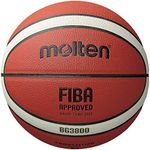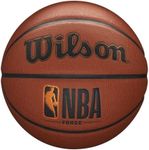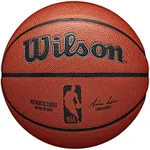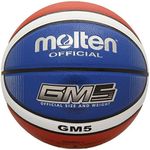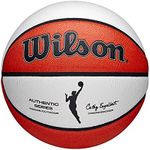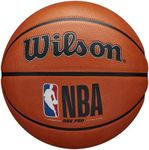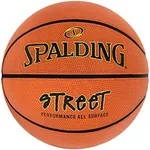Buying Guide for the Best Outdoor Basketball Ball
Choosing the right outdoor basketball is important for both your enjoyment and performance on the court. Outdoor basketballs are designed to withstand rougher surfaces like concrete and asphalt, so they differ from indoor balls in terms of material and durability. When picking a basketball, you should consider how often you play, the type of surface you’ll use it on, and your personal preferences for grip and feel. Understanding the key features will help you select a ball that lasts longer and feels comfortable in your hands.MaterialThe material of an outdoor basketball is crucial because it affects durability, grip, and overall feel. Outdoor balls are usually made from rubber, composite leather, or sometimes synthetic materials. Rubber balls are the most durable and affordable, making them great for rough surfaces and frequent use, but they can feel harder and less grippy. Composite leather offers a softer feel and better grip, closer to indoor balls, but may wear out faster on rough courts. If you play often on outdoor courts, rubber is a safe choice, but if you want a more comfortable grip and play less frequently, composite leather might suit you better.
SizeBasketballs come in different sizes, and picking the right one is important for control and skill development. The standard sizes are 7 (29.5 inches, for men and boys aged 15+), 6 (28.5 inches, for women and boys aged 12-14), and 5 (27.5 inches, for children aged 9-11). Using the correct size helps you develop proper technique and makes the game more enjoyable. Choose the size based on your age and league requirements, or simply what feels comfortable in your hands.
Grip and TextureGrip and texture refer to how the ball feels in your hands and how easily you can control it. Outdoor balls usually have a deeper pebble pattern and wider channels to help with grip, especially when your hands get sweaty or the ball gets dusty. If you value ball control and handling, look for a ball with a pronounced texture and deep channels. Try holding a few balls to see which one feels most secure in your hands.
DurabilityDurability is about how well the ball holds up over time, especially on rough outdoor surfaces. Outdoor basketballs are built to resist wear and tear, but some last longer than others. Rubber balls are generally the most durable, while composite leather balls may show signs of wear sooner. If you play regularly on rough courts, prioritize durability to avoid frequent replacements.
Bounce ConsistencyBounce consistency means how evenly and predictably the ball bounces on outdoor surfaces. A good outdoor basketball should have a reliable bounce, even on uneven ground. Some balls lose their bounce quickly or feel flat after a few uses. When choosing, look for reviews or test the ball yourself to ensure it maintains a steady bounce, which is important for dribbling and shooting.

